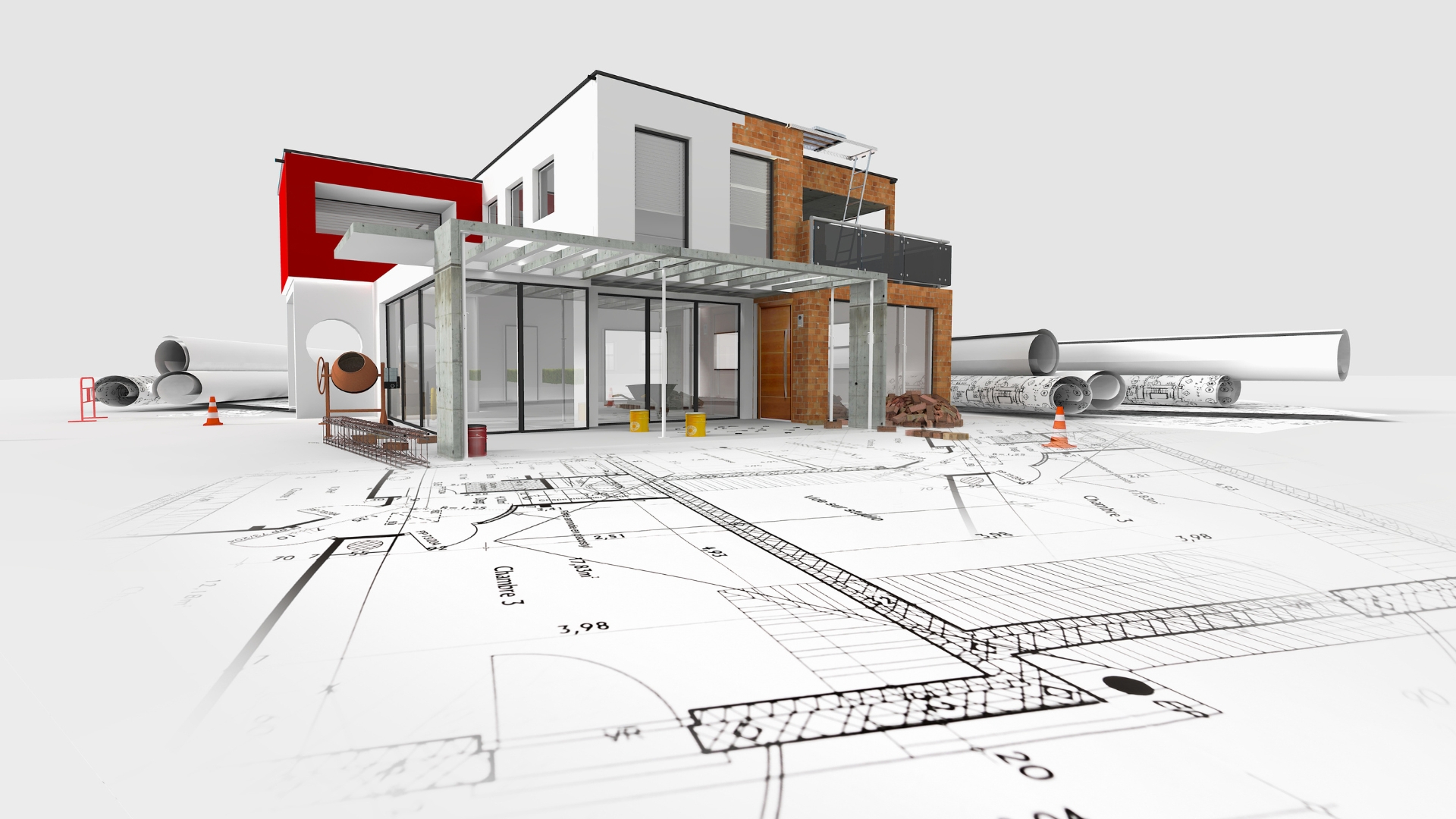
The journey to building a dream home is often fraught with a mix of excitement and apprehension. For centuries, this journey began with flat, often cryptic, 2D blueprints – technical drawings that only trained eyes could truly decipher. Homeowners were left to imagine their future living spaces, struggling to translate lines and symbols into tangible rooms, light, and atmosphere. This reliance on imagination often led to costly missteps, frustrating reworks, and, occasionally, a final product that didn't quite match the initial vision.
However, a revolutionary technology has transformed this landscape, making the abstract concrete and the imagined visible: 3D house rendering. This powerful tool is no longer a luxury but an indispensable asset, providing an unprecedented level of clarity and control in the home design process. It transforms the often-challenging task of visualization into an immersive and interactive experience, ensuring that your dream home isn't just built, but perfectly realized.
At its core, 3D house rendering generates photorealistic, interactive representations of your future dwelling, both inside and out. It’s akin to stepping into your home before the first brick is laid, allowing you to explore every nook and cranny, test every material, and feel the ambiance of every space. This ability to virtually inhabit your future home empowers you to make informed decisions and truly bring your vision to life.
Unparalleled Clarity and Realism
The most striking advantage of 3D rendering lies in its ability to deliver unparalleled clarity and realism. Unlike traditional blueprints, which require a leap of faith and a vivid imagination, 3D renderings present a tangible, visual narrative.
Beyond static images, 3D rendering offers dynamic capabilities like virtual walkthroughs and flyovers. Instead of just seeing floor plans, you can literally "walk" through your proposed home. This immersive experience allows you to understand the flow between rooms, grasp spatial relationships, and gain an intuitive sense of the overall layout. You can navigate from the entryway to the kitchen, then seamlessly transition to the living room, experiencing the progression of spaces as if you were already living there. Exterior renderings provide a comprehensive view of your home from various angles, showcasing its curb appeal, the intricate details of its architecture, and how it integrates with the surrounding landscape. You can assess how the front façade appears from the street, how the backyard connects with outdoor living spaces, and how the entire structure sits within its designated plot.
Furthermore, 3D rendering excels at accurately simulating lighting and shadows. This is a critical element often overlooked in 2D plans. The software can mimic natural sunlight at different times of day, demonstrating how light will stream into your bedrooms in the morning, or how the living room will be illuminated during the afternoon. It can also simulate the effect of various artificial lighting fixtures, allowing you to fine-tune the ambiance of each room before committing to a costly installation. Understanding the interplay of light and shadow is crucial for creating functional, aesthetically pleasing, and comfortable living spaces.
Informed Decision-Making
The true power of 3D rendering lies in its capacity to facilitate informed decision-making. The ability to visualize your home in such detail transforms the design process from a series of educated guesses into a deliberate and confident journey.
With 3D rendering, experimentation becomes effortless and risk-free. Want to see how a different floor plan would impact the flow of your home? Curious about how a contemporary architectural style would look compared to a traditional one? 3D rendering allows you to easily swap out design options with a few clicks. You can instantly change furniture arrangements, explore various wall colors, experiment with different types of flooring, and preview a myriad of finishes without the need for physical samples or costly mock-ups. This iterative process allows you to refine your design until it perfectly aligns with your vision.
Crucially, 3D rendering acts as a powerful diagnostic tool, helping to identify and resolve potential issues early in the design phase. What might appear as a minor discrepancy on a 2D blueprint could translate into a significant structural or functional problem in a built environment. By experiencing your home virtually, you can spot spatial inconsistencies, awkward room layouts, or design conflicts that would otherwise go unnoticed until construction is underway. Addressing these issues in the virtual realm saves considerable time, money, and frustration that would inevitably arise from correcting errors during the physical building process. Imagine avoiding the headache of realizing a doorway is too narrow only after the wall has been framed, simply because you spotted it in your 3D walkthrough.
Moreover, 3D renderings simplify the comparison of different design iterations. You can easily view multiple versions of a room, a façade, or an entire floor plan side-by-side, allowing for a clear and objective assessment. This visual comparison empowers you to confidently choose the option that best suits your needs, preferences, and aesthetic sensibilities.
Improved Communication and Collaboration
Building a home is a collaborative effort involving various stakeholders: you, your architect, interior designer, and contractors. Effective communication is paramount, and 3D rendering provides a common, universally understood language.
Traditional architectural drawings can be a source of misinterpretation. What one person envisions from a line drawing, another might interpret differently. 3D renderings, however, leave little room for ambiguity. They provide a clear, visual representation that everyone involved can easily understand and agree upon. This shared understanding minimizes miscommunications, reduces errors, and ensures that everyone is working towards the same precise vision, leading to a much smoother and more efficient construction process.
For homeowners, 3D renderings empower them to provide specific and accurate feedback to their design team. Instead of vaguely describing a feeling or a preference, you can point to a specific element in the rendering and articulate precisely what you like or dislike, or how you envision a change. This clarity in communication ensures that your feedback is accurately interpreted and implemented, resulting in a home that truly reflects your desires.
Furthermore, 3D renderings can significantly streamline administrative processes. For obtaining necessary building permits or securing approvals from homeowners' associations, high-quality 3D renderings can effectively convey your design intentions, often making the approval process quicker and more straightforward. They offer a compelling visual argument that is far more persuasive than abstract technical drawings.
Cost and Time Efficiency
While there's an initial investment in 3D rendering services, the long-term cost and time efficiencies are substantial. In essence, it's an investment in prevention, mitigating potential financial drains and delays.
The most significant financial saving comes from avoiding costly reworks. By identifying and rectifying design flaws in the virtual environment, you eliminate the need for expensive modifications, demolition, and reconstruction during the physical building phase. Imagine the cost of tearing down a wall or rerouting plumbing simply because a spatial conflict was overlooked in the 2D plans. 3D rendering helps you catch these issues before they become expensive realities.
Moreover, detailed 3D models can assist in accurately estimating material costs and other project expenses. When you can clearly see and quantify every element in your design, it becomes easier to calculate material requirements, preventing over-ordering or shortages that can lead to delays and budget overruns. This level of detail allows for more precise budgeting and the opportunity to explore cost-saving alternatives without compromising the overall design vision.
Ultimately, the ability to make quick, confident design decisions and resolve potential issues upfront directly contributes to faster project completion. A streamlined design process with fewer surprises translates to a more efficient construction timeline, allowing you to move into your dream home sooner.
Realize Your Vision with Immersive Homes
Embrace the future of home building where guesswork is replaced with certainty. 3D house rendering empowers you to explore, personalize, and refine your dream home with unparalleled clarity and confidence, long before construction begins. By leveraging this transformative technology, you save time, reduce costs, and ensure every detail aligns perfectly with your vision.
Ready to step into your future home today? Discover how Immersive Homes utilizes cutting-edge 3D rendering and VR experiences to make your dream home a tangible reality, seamlessly guiding you from concept to completion.

